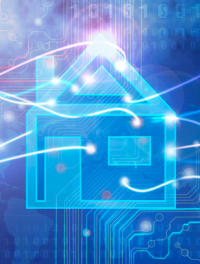Wi-Fi Trends for 2024 and Beyond
By: Tiago Rodrigues

There are around 20 billion Wi-Fi devices in use today, and the economic value of Wi-Fi is an estimated $4 trillion. It continues to enjoy significant industry momentum with the drive into the 6GHz band being the most impressive current factor. There has never been a more exciting time for Wi-Fi as enterprises in all sectors pursue their digital transformation, requiring next generation connectivity across their digital processes with the latest Wi-Fi technology.
The pace of digital transformation has accelerated in the wake of Covid-19 and the societal shifts that occurred in its wake. Wi-Fi is core to unlocking new business opportunities and efficiency gains but must converge with 5G/6G technologies as well to provide seamless experiences for consumer and enterprise users alike.
The evolution of Wi-Fi is taking place on many levels, but here are some of the key areas where we are seeing progress, and I expect to see benefits through 2024 for industry, enterprises, and consumers.
The Adoption of Wi-Fi 6/6E
Internet service providers (ISPs) deliver faster internet speeds than ever. AT&T Fiber is already providing 5Gbps, and Comcast is testing DOCSIS 4.0, leading to a future where 10Gbps speeds will be commonplace. To experience the actual benefits of these advancements, Wi-Fi must follow suit. The massive increase in video-heavy traffic also puts new burdens on the capabilities required of a Wi-Fi network which drives investment in new technologies.
Fiber broadband deployments will continue to expand in most developed and developing markets, creating a need for an upgrade of home Wi-Fi networks to pass on the increased bandwidth to the
device. The rapid adoption of Wi-Fi 6/6E will also be driven by its ability to access additional spectrum in the 6GHz band via the 6E extension as more countries open the band.
Wi-Fi 7 Will be Enabling New Experiences
Gaming and immersive experiences will drive the need for Wi-Fi 7 capabilities. According to a recent report by Bain & Company, the
gaming industry’s growth has accelerated because of the unprecedented engagement of younger teenage gamers who spend about 40 percent more time in video game environments than in using any other
form of media. The exact report forecasts that global revenue for video gaming could increase by another 50 percent over the next five years. In a sport where milliseconds count, networking
equipment will be just as crucial to the game as the speed of the gaming rig. Wi-Fi 7 will be critical for speed and near-zero latency, and game developers will break new barriers with immersive
experiences. Wi-Fi 7 client devices have already been released in 2023 with the Qualcomm chipset and more to come in 2024.
OpenRoaming Reaches a Critical Growth Point
Deployments of Passpoint and OpenRoaming continue to rise as more brands and identity providers recognize the value of the federation to enable seamless connectivity access across different networks. OpenRoaming will reach a critical point of exponential growth by 2026 when tens of millions of hotspots will be enabled. Beyond Wi-Fi, OpenRoaming will extend to integrate with private 5G and IoT in 2024. OpenRoaming has the potential to remove the friction to connect billions of IoT devices securely.
More Enterprises Will Embrace Network as a Service
Network as a Service (NaaS) is defined as network infrastructure hardware, software, services, management, and licensing components consumed in a subscription-based or flexible consumption model.
We are seeing NaaS on the rise, and early adopters include managed Wi-Fi in multi-apartment units. It is soon to spread among traditional enterprises where networks provide cloud-first,
software-defined, application-centric environments.
The NaaS model is driven by enterprises’ inability to keep up with the pace of innovations in the context of skilled labor shortages and a shortened equipment replacement cycle, which means financial pressure exists to move away from the traditional CAPEX model. The prevalence of security attacks is another reason more enterprises will move to NaaS. In a NaaS model, the NaaS provider delivers continuous security updates that prevent and reduce breaches and outages, resulting in higher productivity and customer satisfaction.



















